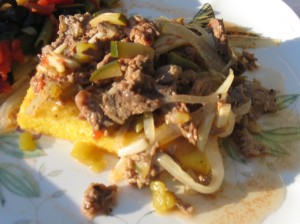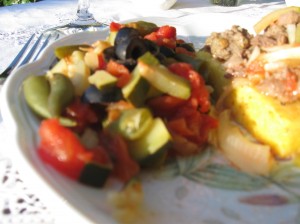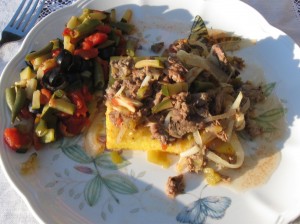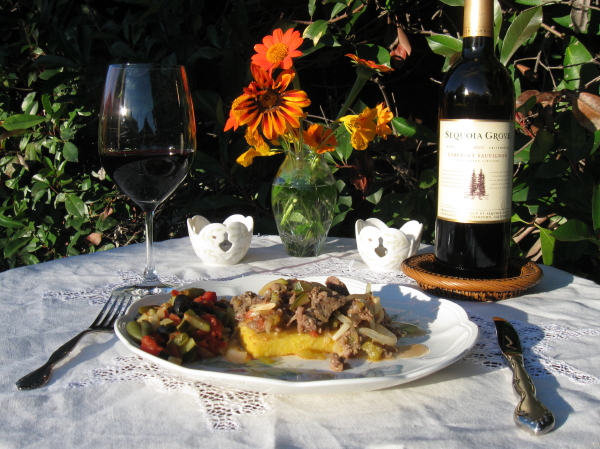Nov 04 2009
Atlas Peak Cabernet Sauvignon

Having now focused on the western side of Napa Valley for Cabernet Sauvignon wines, how does the eastern side of the valley compare?
Again, the answer is based on the specific geographical vineyard location. It is not enough to merely be located on the eastern side of the valley. Is the vineyard on a foothill, edge of the valley floor, or on a mountain? If it is located on a mountain, is that mountain at the northern end of the Vaca Range or the southern end of the Vaca Range? To focus this query, Atlas Peak has been selected for this week and it is renown for its famed Stagecoach Vineyard.
Atlas Peak (located in the eastern bordering Vaca Range), rises to an elevation of 2,663 feet above sea level and is located towards the southern end of Napa Valley. In 1992, Atlas Peak was approved as an American Viticultural Area (“AVA”), but given that it is known as a “mountain appellation”, its actual elevation can range from 760 feet to 2,663 feet. Given that the region is on the eastern side of the valley, it receives full sunlight all day. At higher elevations, the region benefits from cooler mountain-like temperatures and can easily be ten degrees cooler than the Napa Valley floor.
The appellation is primarily known for cabernet sauvignon grapes, which partake from benefits of the location’s climate and also the soil composition itself. The soil is rocky and volcanic but shallow or thin (which promotes good drainage). If you venture up to Atlas Peak you will note steep slopes, various rock formations and that it is not populated with forests of redwood trees (as opposed to Spring Mountain and Diamond Mountain on the western side of the valley). Despite the desolate rugged mountain terrain, cabernet grapes thrive here and are capable of creating truly expressive wines.
Numerous vintners flock to the growers located in the Atlas Peak AVA and one vineyard in particular is most notable for producing wonderful cabernet sauvignon grapes: Stagecoach Vineyard. The vineyard exceeds 1,200 acres from the western slope of Atlas Peak to the edge of Pritchard Hill and over fifty wineries purchase grapes from this vineyard. This week’s featured wine is Sequoia Grove’s 2005 Stagecoach Vineyard Cabernet Sauvignon.
Sequoia Grove’s 2005 Stagecoach Vineyard Cabernet Sauvignon tumbles into the wine glass dark and foreboding. Its bouquet wafts with dark fruit such as black cherry and cassis with a hint of “come hither” spice. With its tannins in check, this wine is one smooth cat as it coasts across the palate with a slight sensation of earthiness and coyly reminds you of its dark fruit components. It lingers pleasantly on the palate with bits of black cherry wandering into its finish.
Given the dark, expressive nature of this particular wine, a more rustic flavorful meal is merited. This week’s menu hosts:
1) Ropa Vieja;
2) Broiled Polenta Cake; and
3) Olive-Vegetable Ragout.
Ropa Vieja, while traditionally a Cuban dish, was introduced to me years ago in Mexico and often was considered a “clean out the fridge” type of meal. It was hearty, simple, used a variety of ingredients and spices and was a different savory take on shredded beef. Here, the ingredients are kept to a minimum so as to not overpower the wine or the other side dishes to come. A collection of typical seasonings for steak, garlic, sautéed sweet onions and chiles, collectively slow-roasted and ultimately simmered to perfection, creates this Mexican-influenced Ropa Vieja.
As opposed to serving Ropa Vieja with tortillas, polenta was another classically rustic dish that would blend harmoniously with the Ropa Vieja. Since polenta is based from corn meal, its starches would not fight with the paired cabernet sauvignon. While many love to pair potatoes with beef, potatoes are not a natural companion for cabernet sauvignon as the starches in the dish often fight with the wine. That considered, even the polenta will need some seasoning. Rather than reach for the salt, I used parmesan cheese. Parmesan cheese offers a salty sensation yet keeps the sodium lower in the dish (which is important since the Ropa Vieja is seasoned). Once properly made into creamy polenta, the polenta was then transferred to a baking dish to chill overnight in the refrigerator. Cutting it into thin squares, it was placed the next day on the heated broiler to firm the outer edges, yet warming the soft creamy polenta filling. Topping the Broiled Polenta Cake with Ropa Vieja simulates the concept of the tortilla, yet incorporates a rustic Old World traditional dish.

Next, to add some color and a vegetable side dish, an Olive-Vegetable Ragout was created using the last of this fall’s green beans picked fresh from the garden, diced tomatoes, zucchini, black olive slices and seasonings. Making a ragout is similar to sautéing and making a stew at the same time. The juice from the ragout serves as a great dressing over the Ropa Vieja. Similarly, if there is a vegetarian guest at the table, the Olive-Vegetable Ragout on top of the Broiled Polenta Cake is hearty, filling and rich with flavor.

Once all of these dishes are taken together with Sequoia Grove’s 2005 Stagecoach Vineyard Cabernet Sauvignon, the flavors harmoniously blend together. The food is wonderfully rustic and warming in its flavors and the wine sidles up naturally, reminding every so often of those lovely black cherry notes. The food is filling, yet not heavy, and the wine is smooth and silky.

Whether you are cleaning out the refrigerator this November in anticipation of the upcoming holidays or cleaning out the final fresh vegetables from your garden before frost, a warm, lively rustic meal easily awaits only to meet a dark, expressive Cabernet Sauvignon. The two together are a well-suited match and can liven up any dining table on a dark November night.

Comments Off on Atlas Peak Cabernet Sauvignon